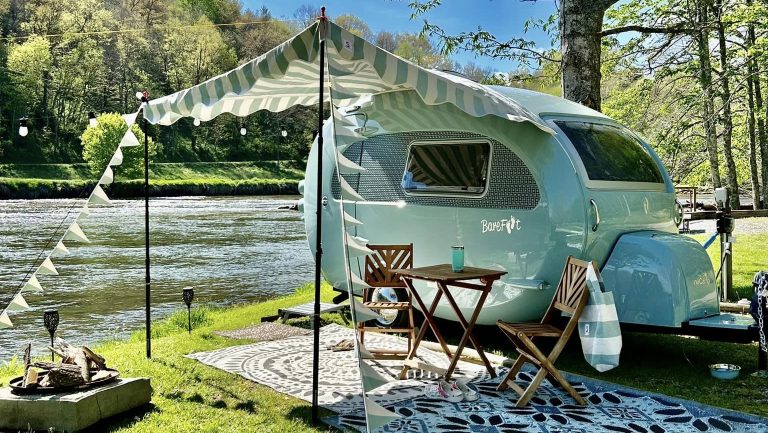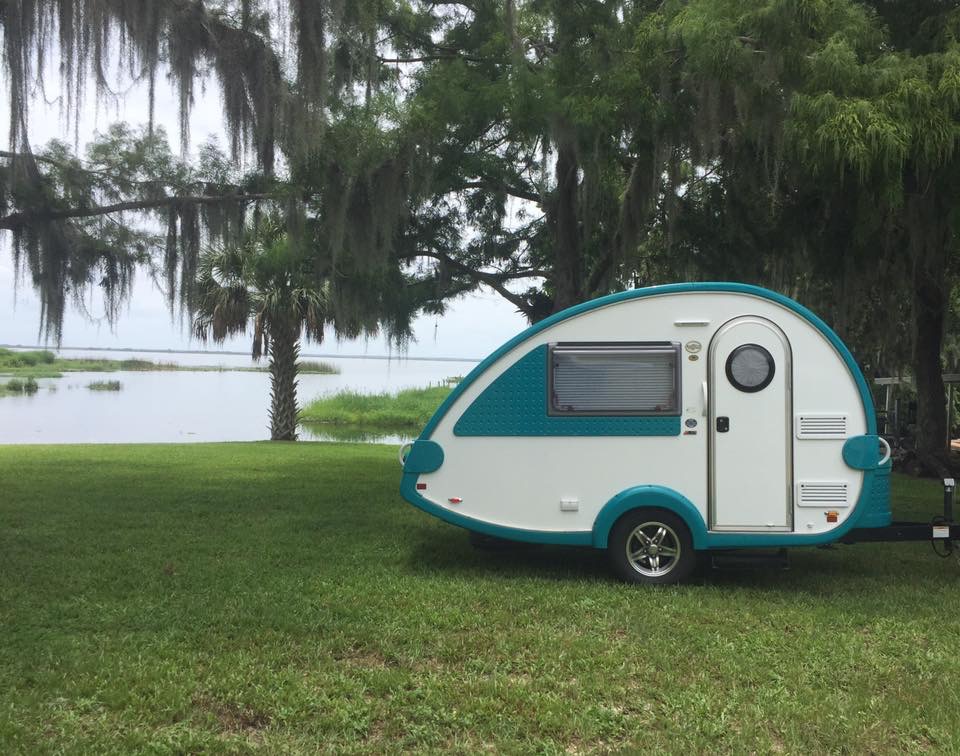As autumn fades into winter, it’s time to consider what to do with your camper during the cold months. Of course, if you’re a year-round RV-er, this isn’t an issue, but for many people, choosing to hang out in their bricks-and-sticks home for a few months means making a decision where best to keep their camper: outside on their property or inside their garage or an RV storage facility. Here are some points to consider for both choices.
Outside Storage
You’ve got space on your property that can accommodate your camper. You’ll just toss a tarp over your unit and there you go—an RV storage space for free. What could go wrong?
Maybe nothing, if you’re lucky and if the weather is mild and if the wildlife and insects stay clear of your camper. But if any of those ideal circumstances don’t occur, your “free” space could end up costing you plenty.
Let’s start with the elements. Rain, wind, or snow (or all of them at various times during the storage period) can damage the exterior of your camper as well as cause problems inside should any moisture makes its way to the interior. A metal carport along with a breathable RV cover will give your camper some protection, but not as much as if it was inside a fully enclosed unit.
Then look at the potential inconvenience and possible issues. If your RV is on your driveway, you’re losing one or more parking spots as well as potentially obstructing your neighbor’s view when exiting their own property. Also, if your driveway slopes, this means the weight distribution will be unequal, which can lead to damage to the axles and components, says Camper Report.
If you park the camper in your yard, the weight could damage the grass, lead to dry rot of the tires or even cause the unit itself to sink into the ground, not to mention providing critters with a quick route into your camper. And if you park it under a tree, falling branches can damage your camper, or at the very least, shed pollen on the exterior, cautions Small RV Lifestyle.
RV Travel has some suggestions if you’re determined to use some part of your back-forty to park your camper. These range from a vapor barrier or gravel and crushed rock base to interlocking concrete pavers or a poured concrete slab.
Then there’s the issue with rules and regulations. You may be in violation of HOA policies or local municipality ordinances that don’t permit RV parking even on your own property, notes Camper Report. There may also be rules against adding a carport. Adding a permanent slab large enough to handle your rig? It may also encroach on the allowable space between your property and your neighbor’s or cause a problem with water drainage.
Finally, consider the potential for vandalism or theft. Unless your home is surrounded by a security fence, leaving your camper outside is like extending an invitation to criminals to break in or even drive off with your camper or RV, says Extra Space Storage.
Inside Storage
You’ve decided your baby needs more protection than a tarp or carport will provide, so you’re considering using your own garage. Great—assuming it will fit. While it’s true that most trailers, pop-up campers, and small motorhomes can fit in a garage, says Extra Space Storage, this may also mean that one of your other vehicles will now have to be outside.
And if it’s too big to fit in your current garage and you decide to construct a bigger one, the cost can start adding up, not to mention the risk that it will make your home less attractive from a resale standpoint. You may also need to get approval to build one big enough to handle a large motorhome.
If using your own garage isn’t an option and leaving your camper outdoors exposed to the elements is a no-go, that leaves you with using an RV storage facility. While you can rent an outdoor space in a fenced-in lot, that doesn’t solve the problem with wind, rain, snow, and may not provide the security you desire, unlike an indoor facility.
One of the biggest advantages of using indoor RV-specific storage is the security it offers, including an enclosed space with a unit lock, says Extra Space Storage. Depending on the facility, features may include a climate-controlled environment and electric service as well as “concierge” options: periodic maintenance, winterization and de-winterization, or detailing of your RV before it leaves its winter home, says Camping World.
Of course, all this comes at a cost, influenced as much by the geographic location as the size your RV requires. A Class A or Class C motorhome might require 30 feet or more as well as a height of more than 13 feet, depending on the RV, says Storage.com. However, some of the expense could be offset by a discount from your insurance company, notes Outdoorsy.
Finally, whether you choose indoor or outdoor storage, follow the manufacturer’s instructions for winterizing your camper. Additional recommendations are in our post, Preparing Your Camper for Long-Term Storage.
Recent Articles





